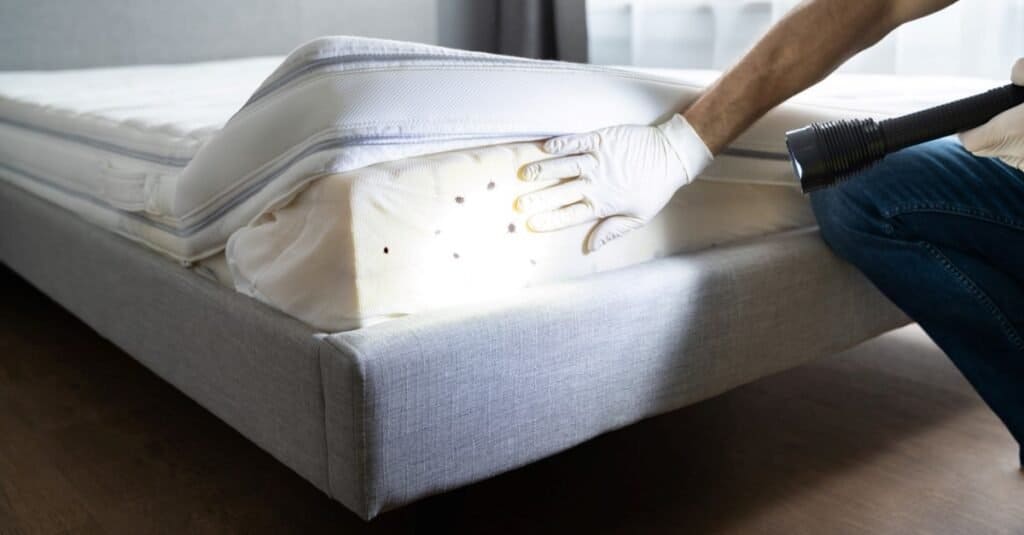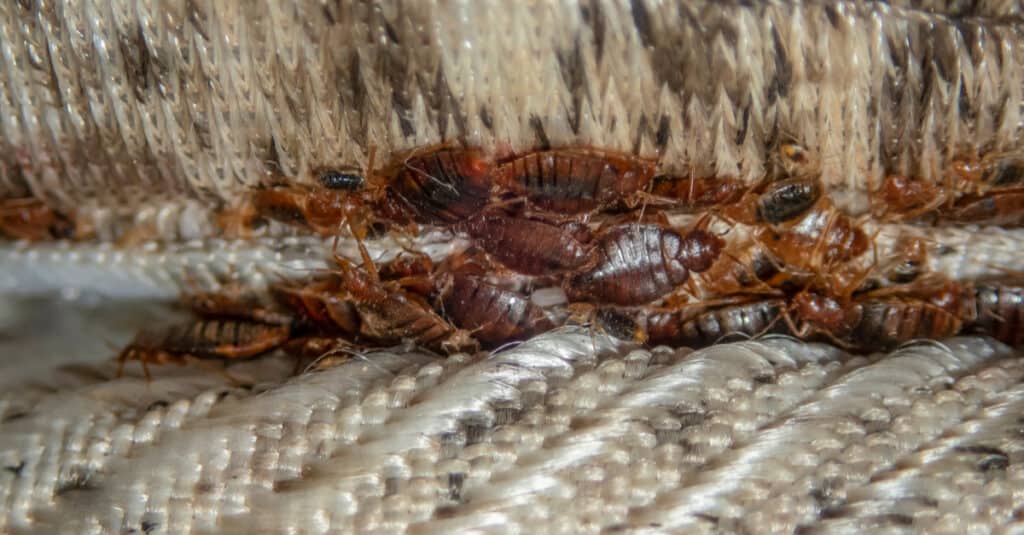Is there a chance you have bed bugs in your home? If you think you have bed bugs, it’s a good idea to start the process of finding out for sure. But do you know how to check for bed bugs? If not, the following facts can help you determine whether you have an infestation in your home. Even more importantly, learn what to do if these persistent pests have somehow made their way into your house.
Where Are Bed Bugs Found?
Bed bugs are found in sofas, chairs, and carpeting. They are sometimes found under pieces of furniture. For instance, you may lift a floor lamp to find bed bugs hiding beneath its base. These bugs hide under table legs and beneath large appliances. They have even been found behind electrical outlet plates that are attached to walls in a home. One of the most incredible facts about bed bugs is they are so small that a dozen of them can fit into a screw hole in the wall.
These bugs look for dark places with crevices, cracks, and other small areas where they can hide.
How Do You Check for Bed Bugs?

©Andrey_Popov/Shutterstock.com
Before starting the process of checking for bed bugs, put on some rubber cleaning gloves to protect your skin.
Start the process by lifting the cushions of your sofa and chairs. Look beneath the cushions as well as at the seams where these bugs can hide. Lift table lamps and floor lamps to check the area beneath them. Also, look into the base of each lamp. Sometimes these bugs occupy areas around the wires and cords inside a lamp.
Remove all of the blankets, sheets, and mattress cover from the bed. Bed bugs tend to hide in the seams of a mattress. Also, check the bed frame, especially its joints. Bed bugs like to hide in the narrow spaces where the parts of a bed frame are joined together.
Lift up area rugs to check underneath them. Bed bugs are most likely to be found around the seams and edges of an area rug.
If you have any loose areas of wallpaper, check behind them. Bed bugs sometimes live on the wall or in crevices behind loose or damp wallpaper.
What Are Some Signs of Bed Bugs?
Sometimes it’s easier to look for signs of bed bugs as opposed to the bugs themselves. Plus, identification of bed bugs can be challenging because they are often confused with other types of bugs.
One of the most obvious signs of bed bugs is the presence of rusty-red spots on sheets, pillowcases, or the fabric of cushions. These spots are created when bed bugs are smashed or partially crushed. Black spots are another sign of bed bugs. These spots are their feces, or the waste they leave behind.
The identification of a bed bug involves looking at the stages of its life. First, it’s an egg, then a nymph, and finally an adult. As a bed bug grows from a nymph into an adult bug, it sheds its skin. So, the light or pale brown discarded skin of a bed bug is definitely a sign of this pest.
Bed bugs lay eggs less than a millimeter long. They are yellowish or white in color and found in clusters. Finding a cluster of eggs is solid proof you have bed bugs.
What Causes Bed Bugs to Invade?
There are a lot of myths surrounding the causes of a bed bug infestation. One of those myths is that these bugs only invade messy homes, offices, businesses, etc. The truth is that bed bugs aren’t attracted to messy environments or decaying material. A bed bug infestation can happen in any place where they have access to food. What type of food? Bed bugs live on blood, so they are found wherever humans are found.
Though bed bugs don’t flock to messy places, it does help to reduce the clutter in a home or office. When there’s very little clutter in a home or office, it means bed bugs don’t have as many places to hide and multiply. It makes it a little easier to get rid of them.
Why is it Common to Find Bed Bugs in a Hotel?
It’s not unusual to find bed bugs in a hotel. Even a hotel with the cleanest, neatest rooms can suffer a bed bug infestation. It’s likely for a bed bug infestation to happen in a hotel because of the number of people who stay in the rooms.
For example, one person may check into a hotel room with a couple of suitcases. The person isn’t aware there are bed bugs hiding in the pockets of the suitcases. The insects crawl out of the cases and move into the bed frame or beneath the furniture in the hotel room. The person checks out and the next occupant checks in. The bed bugs make their way out of the bed frame and into the guest’s bags. When he checks out of the room, the bed bugs go home with him. This is how easy it is for bed bugs to make their way anywhere and cause an issue.
Can Bed Bugs Live in a Car or Other Transportation?
Unfortunately, yes. Of course, you know to check your house for bed bugs, but it’s also possible for these pests to live in a car, bus, train, or even a plane. If humans occupy the space, then bed bugs have the food source they need to survive and multiply.
What Type of Damage Can Bed Bugs Do?
One of the most intriguing facts about bed bugs is they don’t cause physical damage to a home. They are different from pests like termites that eat through wood damaging the walls, floors, and ceilings of a home. Instead of causing structural damage, bed bugs multiply, leave behind red stains, and bite humans occupying the home!

©Dmitry Bezrukov/Shutterstock.com
How Do You Get Bed Bugs to Come Out of Hiding?
A hairdryer is one tool that can help you to get bed bugs out of their hiding places. Take a hairdryer and put it on a high heat setting. Point the hairdryer wherever you think the bed bugs are hiding. For instance, if you think you have bed bugs hiding in the bed frame, aim the blow dryer at one of the joints. This will prompt the bed bugs to come out of hiding in order to escape the heat. Once they emerge from their hiding place you can trap them with a cloth or paper towel.
Do Bed Bugs Bite?
Yes, bed bugs bite. Red skin and itchiness are some of the symptoms of bed bug bites. Fortunately, these bugs aren’t poisonous. The treatment for a bed bug bite is to wash the area with soap and water, then apply ointment to ease the symptoms. This treatment should clear up the bed bug bites, but it’s best to see a doctor if symptoms persist.
How Do You Get Rid of Bed Bugs?
If you’re tired of bed bug bites and want to get rid of these pests once and for all, there are several ways to do it. You may want to get some bed bug traps. These traps are available in different designs so it’s important to read the facts about each one to find what works best. They are usually placed at the base of a wall or beneath a table, bed, or other furniture.
Steam cleaning a carpet is another way to get rid of bed bugs. This could be a portable steam cleaner made for the home or a commercial steam cleaner operated by a professional. These bugs hide near walls and beneath carpeting or rugs so a steam cleaner can kill and remove them. The heat from the steam causes them to come out of hiding.
Removing all of the blankets and sheets from a bed and vacuuming the mattresses can get rid of these bugs. The mattress, the springboard, and the bed frame have to be thoroughly vacuumed in order for this method to work. Be sure to wash all of the bedding in hot water and thoroughly dry them before putting everything back onto the newly vacuumed mattress.
You can get rid of bed bugs by calling a professional exterminator. Keep in mind there are some exterminators who use chemicals to get rid of bed bugs while others use natural solutions and traps. It’s best to ask up front what kind of treatment the professional uses. Furthermore, a bed bug removal professional should conduct a follow-up appointment to ensure the treatment worked. These professionals are experts at bed bug identification and have experience locating this bug’s typical hiding places within a home.
Next Up…
- What Causes Bed Bugs? How a Bed Bug Infestation Starts: Bed bugs can make your life very difficult. Here is what can cause bed bugs and how to avoid them.
- What Kills Bed Bugs Instantly?: If you have ever had a bed bug infestation, you would know how difficult they are to get rid of. Here are somethings that you can do to get rid of bed bugs.
- How To Check For Bed Bugs: Here are some expert tips on how to check if you have had a bed bug infestation.
The photo featured at the top of this post is © Pavel Krasensky/Shutterstock.com
Thank you for reading! Have some feedback for us? Contact the AZ Animals editorial team.






